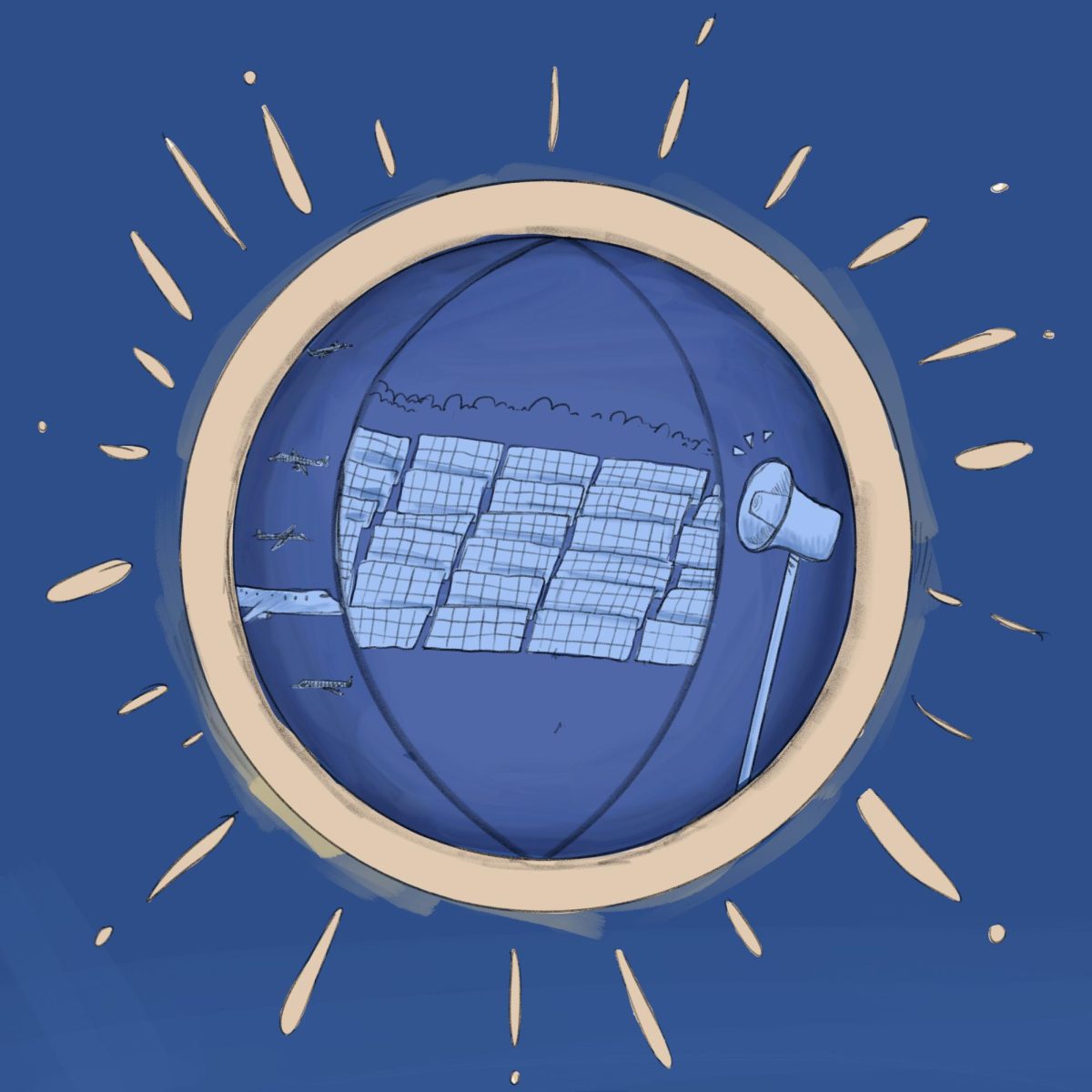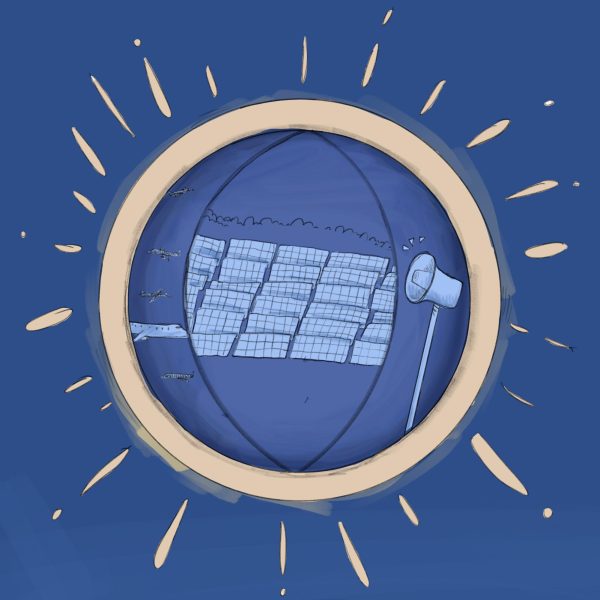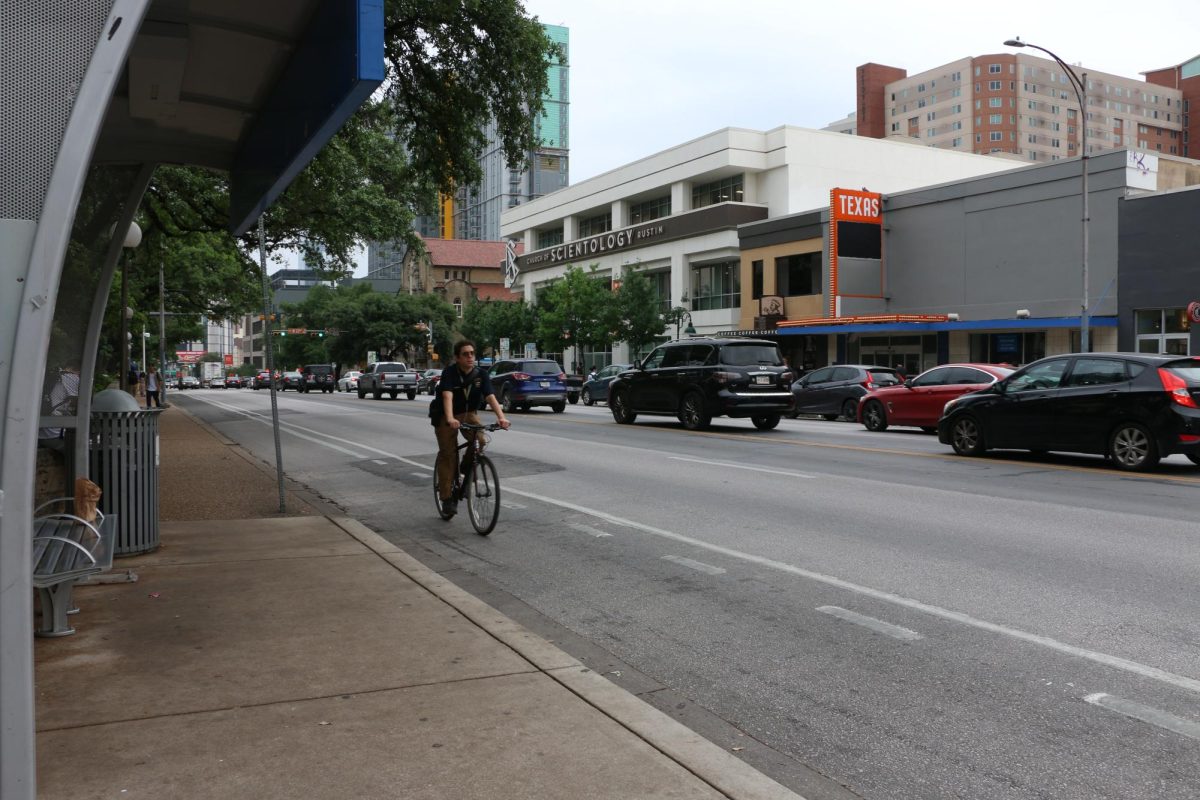Austin airport prepares for wave of travelers
Austin-Bergstrom International Airport officials urged passengers to stay vigilant when traveling this weekend for the solar eclipse on April 8.
The city of Austin expects a wave of travelers because Austin lies in the eclipse’s path of totality, meaning viewers can see the moon’s shadow completely cover the sun at about 1:30 p.m. This coincides with local events like the Country Music Television Awards.
Elizabeth Ferrer, the airport’s public information specialist, said she expects the weekend to be unusually busy.
“Thursday, Friday, Saturday and Monday are our big travel days when we have a busy season like the spring right now,” Ferrer said. “The eclipse is something that’s unique for the airport. It is something that hasn’t happened in a few generations. So it’s a double-edged sword.”
Flights to eclipse destinations are filling quickly despite significant price increases. A special path-of-totality flight from Austin to Detroit offered by Delta Airlines at a maximum of nearly $1,200 per ticket sold out in less than 24 hours.
Ferrer said they’re expecting a record-high for rented vehicles and recommends drivers plan for potential backup on roads.
The airport’s recommendations are the same as any other busy travel day, Ferrer said: allow extra time for rental car returns, arrive two to three hours before flights and ensure that luggage contains no items prohibited by the Transportation Security Administration.
Ferrer also emphasized that while the airport will increase staffing for the eclipse, passengers fare better when they use online resources like Visit Austin’s interactive maps to find gates before arriving and check their flight status with their airline.
“It’s up to passengers to keep in touch with their airline to be sure that something isn’t stopping their flight,” Ferrer said. “Coming or going, you should always do that.”
Travis County declares disaster
Travis County Judge Andy Brown issued a disaster declaration on March 8 in anticipation of the total solar eclipse and the crowds it will bring on April 8, according to a press release.
“This disaster declaration will allow our first responders and public safety officials to better manage traffic and crowds as we anticipate the population to potentially double in size,” Brown said in the press release. “We want to ensure everyone can enjoy the total solar eclipse in Travis County.”
Due to the higher number of visitors, the county encourages residents to plan for heavy traffic on the day of the eclipse and stock up on groceries and fuel.
Austin is one of the largest American cities in the eclipse’s path of totality. The next total solar eclipse viewable from the contiguous U.S. will be in 2044, according to NASA’s website. The last time what would become Austin saw a total solar eclipse was 1397, according to Travis County’s website.
The city won’t see another total eclipse until 2343.
Solar power decreases, UT to see limited impact
Monday’s total solar eclipse will be a once-in-a-lifetime experience that thousands of Texans can enjoy — but it could potentially impact how much solar energy is produced, according to the Electric Reliability Council of Texas.
In Texas, the eclipse will take place from around 12:10 p.m. in the southwest to 3:10 p.m. CDT in the northeast, with sun coverage varying from 81% to 99%, according to ERCOT. ERCOT said the eclipse will impact its solar energy generation from approximately 12:10 p.m. to 3:10 p.m., with the most significant impact anticipated around 1:40 p.m., diminishing solar generation to about 8% of its peak output under clear skies.
ERCOT is working with “solar forecast vendors” to ensure the system withstands the impact. They will adjust the system accordingly and use generators as necessary to provide energy, according to a March 7 report.
About half of the University of Texas’ solar infrastructure is located at the J.J. Pickle Research Campus, where it back-feeds surplus energy to Austin Energy. The remaining solar panels are situated on the main campus and are employed to reduce the demand on the power plant. The University has around 450 kilowatts of solar capacity, whereas ERCOT possesses almost 23,000 megawatts of generating capacity.
Because of this, the University does not expect its power to be impacted.
“While the eclipse may cause systems to see a reduction or possibly a pause in solar power, the impact is not expected to affect power plant provided power on campus,” a University spokesperson said.
















